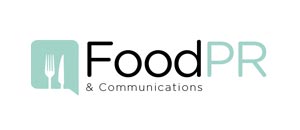Over-sharing online is something which social media users have become increasingly familiar with in recent years. From posting the common ”selfie” to showing off their latest purchase, people are posting more and more snippets of their lives online. Instagram, for those who are not familiar with it, is a social media site which focuses on pictures and images. Users use hash-tags (#) to generate publicity on their posts. Recently, many users have begun to use Instagram to share snaps of what they are eating for breakfast, lunch and dinner, this is commonly known as food-ography. Hashtags such as #instafood and #foodpic take over the ‘instafeed’ on a daily basis with reports of about 60% of photos uploaded on Instagram being of food and drink.
Food, of course, is quite a visual thing, the appearance of something often determines whether you want to eat it or not, so it makes sense that taking and viewing photos of it is something which interests people. Restaurants, cafes and other businesses within the food industry are becoming more aware of the power of social media such as Instagram and it is generating quite a stir. It can work as either an advantage or a disadvantage and can be seen as a pro or a con in terms of marketing and promoting. Some restaurants see it as an effective marketing tool and use it to reach out to their customers and potential customers. An example of which made headlines last month was with The Picture House which opened in London in early May and is due to open elsewhere in the UK in coming months. It is the world’s first pop-up ”pay by picture” restaurant which shows just how far this social media trend has come. Customers at the restaurant will be asked to upload photos of their meals to social media sites such as Facebook, Twitter and Instagram using the hash-tag #BirdsEyeInspirations. If they do this successfully, then they aren’t required to pay for their meals! It is part of an innovative marketing scheme by frozen foods giant Birds Eye in order to advertise and promote their new range of meals. Birds Eye decided to implement the idea and utilize social media after discovering that over half of diners upload photos of their meals online. In a world where big brands need to work a little harder at gaining loyal followers this is an example of clever customer engagement and the power of the food-ography era.
However, not all businesses in the food industry see the trend of taking photos of what you’re eating as such a blessing, in fact some would do anything to avoid it! Some chefs, and not just fussy Michelin chefs, feel that by customers posting photos of meals out online they are ruining the experience for future diners and also are possibly giving inspiration from their work to other chefs. Some even feel that diners are often more consumed with photographing their food than actually eating it. One such is French Chef Alexandre Gauthier, who runs the high class Grenouillere restaurant in France . He has gone as far as to put a picture of a camera with an ‘x’ through it on his menus in an attempt to ban customers from taking photos of his work . Michelin star chef Gilles Goujon is of the same opinion, having been quoted as saying ”Someone could copy me, plus a photo taken on an average smartphone is rarely a great image. It doesn’t give the best impression of our work. It’s annoying.’’ This opinion appears to be seen worldwide, with reports of restaurants in New York City banning customers of ”foodstagramming” their meals as it disturbs other customers and infuriates the chef . Bans vary from just a ban on using the camera flash to complete camera bans. Food-ography and foodstagramming appears to be taking over. Whether you are for it or against, there’s no denying the power of the social media tool and the rapidness of which it has spread globally.





